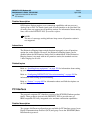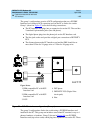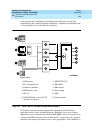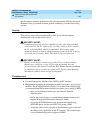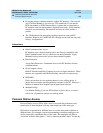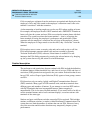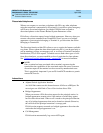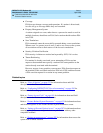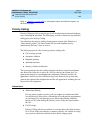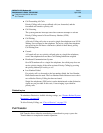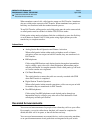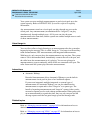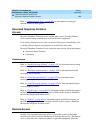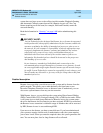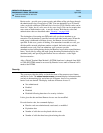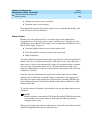
DEFINITY ECS Release 8.2
Administrator’s Guide
555-233-506
Issue 1
April 2000
Features and technical reference
1462Priority Calling
20
Refer to ‘‘Station’’ on page 882 for information about and field descriptions on
the Station screen.
Priority Calling
Priority Calling provides a special type of call alerting between internal telephone
users, including the attendant. The called party receives a distinctive ring when the
calling party uses Priority Calling.
You administer the priority-calling ringing-pattern system wide. Default is a
3-burst alerting signal. You allow feature use for each telephone user by
administering the user’s class of service.
The following types of calls are always priority-calling calls:
■ Call coverage consult
■ Automatic callback
■ Ringback queuing
■ Attendant intrusion
■ Security violation notification
The system generates the call waiting ringback tone that a single-line telephone
user hears even if the user is active on a call. In contrast, the system does not
generate the pattern for a multiappearance telephone if there are no idle call
appearances. In this case the caller hears busy tone. However, the system does
generate the pattern if the telephone has an idle call appearance, including the one
reserved for call origination.
Interactions
■ Abbreviated Dialing
If a user wants to make a priority call to a number in an abbreviated dial
list, the Priority Calling access code and the AD code must be programmed
on one button. If a user attempts to use Abbreviated Dialing (either by
button or FAC) after dialing the Priority Access Code, the system denies
the call.
■ Call Coverage
Priority Calling calls do not redirect to coverage unless the caller activates
Go to Cover. If the call redirects, it remains a priority call, and the covering
user receives a distinctive (default is three-burst) ringing signal.



